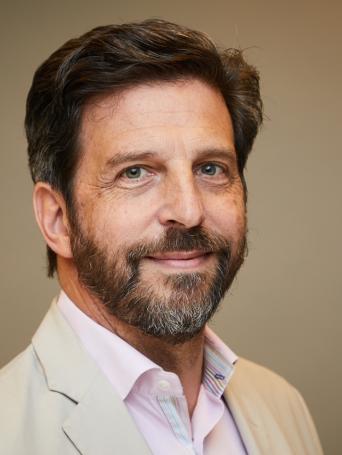
Tim Tompkins has worked for over three decades to understand and improve cities, with an emphasis on neighborhood-driven economic development, place management, public art, and public-private partnerships.
As an NYU Marron Institute Fellow, he leads the Sustaining Places Initiative, which focuses on how place-centered partnerships sustain cities. He also is an Adjunct Professor of Urban Planning at the Wagner School of Public Service at New York University, where he has taught two courses: “Transforming Cities Equitably: Public Space, Partnerships, Politics & the Press” and “Arts, the Artist and Urban Transformation.” In September 2024 the Brookings Institution appointed him a Nonresident Senior Fellow at Brookings Metro, where he has written about the importance of hyperlocal, place-centered partnerships.
Tompkins was President of the Times Square Alliance, one of the nation’s pre-eminent Business Improvement Districts (BIDs), from 2002-2020. The many public realm improvements during his tenure included the building of the iconic red steps on Duffy Square and the creation, in partnership with NYC, of the Broadway Pedestrian Malls. He oversaw the annual New Year's Eve celebration and created other initiatives such as the Summer Solstice Yoga celebration, the Times Square Design Lab and Broadway Buskers. He articulated a set of principles underlying Times Square’s dramatic changes, and put forth a strategic and brand vision for its future.
While at the Alliance he created the first fully-staffed, full-time public art program by a Business Improvement District in the nation. Since its inception as Times Square Arts, led by Sherry Dobbin from 2012 - 2016, it has featured works by a diverse group of nearly two hundred prominent and emerging artists. As part of that program he and Dobbin founded Midnight Moment, the world’s largest, longest-running digital art exhibition, synchronized on electronic billboards throughout Times Square nightly from 11:57pm to midnight.
He is former Chair of the International Downtown Association, which represents thousands of BID-like entities worldwide and former Co-Chair of the NYC BID Association, which represents NYC's 75 BIDs. He was the Founding Director of Partnerships for Parks, which won an Innovation in Government Award from Harvard's JFK School of Government and the Ford Foundation for its work in revitalizing the Bronx River. Subsequently he co-led Parks 2001, an advocacy campaign to secure more public funding for parks. Public art in parks was a central part of Partnerships’ work. Prior to that he was Senior Project Manager at the New York City Economic Development Corporation, where he worked on efforts to revive 42nd Street, and before that he was the Nationals Editor of the Mexico City News.
Tompkins has discussed urban transformation in keynote speeches across the US and in many cities around the world, including Stockholm, London, Bilbao, Tokyo, Singapore, Toronto, Mexico City, Sao Paulo, New Delhi, and Barcelona. He has also presented at TEDx Times Square. He is a Senior Advisor for PlacemakingX. As the principal of SharedCitySharedSpace he advises clients about how to make more prosperous, vibrant and equitable cities through place-centered partnerships. He has an undergraduate degree from Yale, an MBA from Wharton, and has studied at IESE. He resides in New York and has also lived in Paris, Mexico City, and Barcelona.
He is a certified yoga teacher and enjoys sailing when not in the midst of the urban jungle.